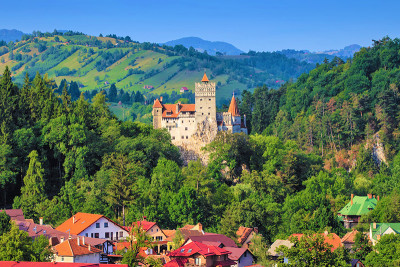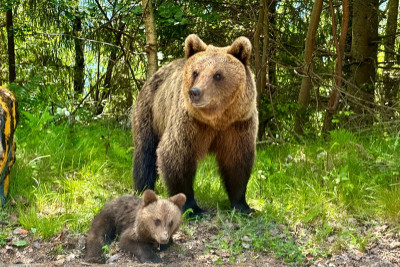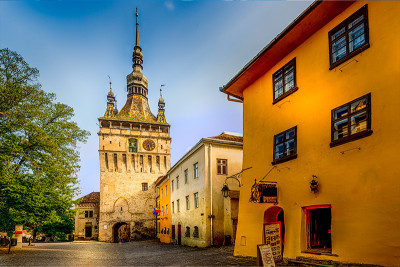Bucovina is a historical region in northern Romania. It has 12 cities in Romania and 7 cities in Ukraine. Known especially for the wonderful landscapes and monasteries in the area, Bucovina is a real treasure chest for tourists who come to discover it.
Picturesque, gorgeous cities and dozens of places where tradition is still preserved are the most valuable treasures of Bucovina. For those who want to discover the traditions of the Romanians and enjoy nature, we have created a list of several reasons why Bucovina is worth visiting.
1. Focsani City
Focsani was the first city where the first institutions of the new state emerged. It was founded after the unification, which is why it is considered the first capital of the United Principalities.
Focsani is known as “The City from Milcov”, the place where Stefan the Great established the border between Moldova and Wallachia in 1482.
After the Union of the Romanian Principalities, Focsani is known as the “Union City”, becoming a symbol of the union ideal. On July 6, 1862 Alexandru Ioan Cuza signed the decree of unification between the two parts of the city (Moldavia and Wallachia), which until then had been divided by Milcov River (separating the two Principalities).
The most important tourist attractions in Focsani are part of the cultural heritage of Vrancea County.
2. The Town Of Panciu
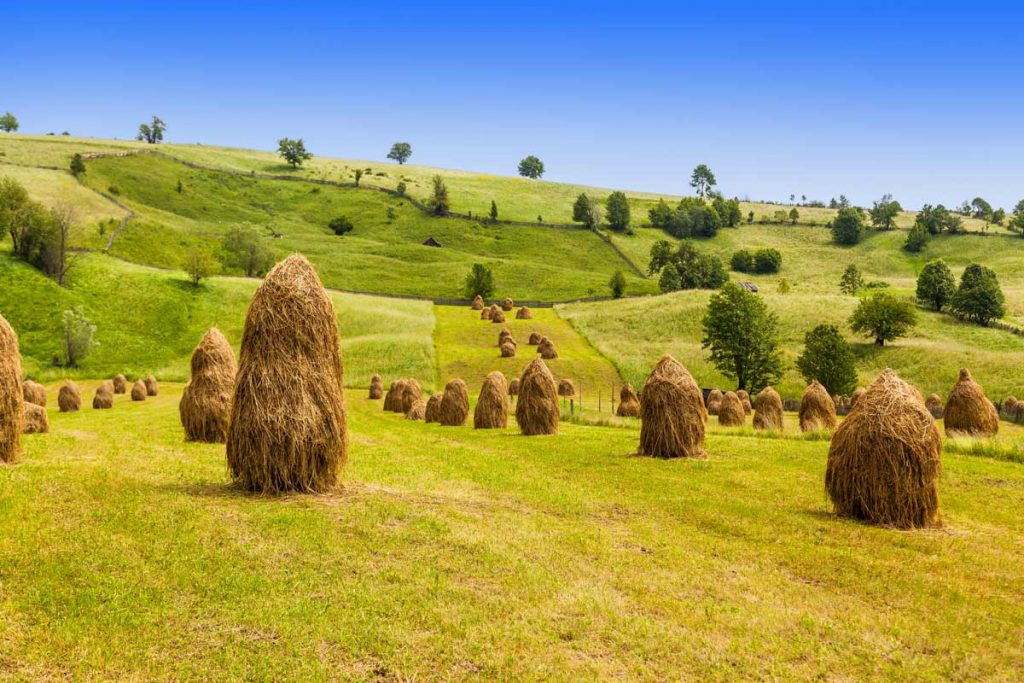
The town of Panciu administers several villages, their names having the most varied connotations. The Lower Cross and the Upper Cross are two villages with the oldest documentary attestation. Most likely the names come from the crossroads – on the one hand the Tecuci-Soveja road, on the other hand the Tifesti-Fitionesti road, Movilita.
The village of Tifesti is located in the middle of the vineyards in northern Vrancea County. Panciu vineyard is over 120 hectares in surface area. It is one of the most important tourist attractions for wine lovers: a wine cellar with both French grape varieties such as Sauvignon Blanc, Muscat Ottonel, Chardonnay, Aligote, Pinot Noir and Cabernet Sauvignon and famous Romanian grape varieties such as Feteasca Alba, Feteasca Regala, Sarba, Black Babeasca and Feteasca Neagra.
Company portfolio Panciu covers the whole range of wines: white, rosé and red, sparkling wine produced using the traditional method, sparkling wine or frizzante obtained by fermentation in tanks.
3. Sucevita Village
Sucevita is part of the well-known settlements of Romania, mainly due to the monastery with the same name (Sucevita Monastery).
The Sucevita Monastery ends the glorious chapter of 15th-16th centuries Moldavian art and unlike the previous monuments, it is no longer the work of a founder, but of a boyar family who gave the country a metropolitan and two rulers: Movilestii.
Located 19 km southwest of Radauti town, the Sucevita Monastery has its own legend. It is said that a woman who had sinned carried the stones necessary for the construction of the monastery. In exchange for this hard task that took 30 years, the woman would have received God’s forgiveness.
Historical evidence suggests that the monastery was first mentioned in 1583, during the time of voivode Petru Schiopul and was built by Irimia, Simion and Gheorghe Movila.
The paintings of the monastery – the main attraction both for Romanian tourists and foreign tourists – were done much later in 1595. And the massive walls around the Sucevita Monastery (each about 100 meters long, three meters wide and over six meters high) were built after 1595, during the reign of Ieremia Movila.
4. The Voronet Monastery
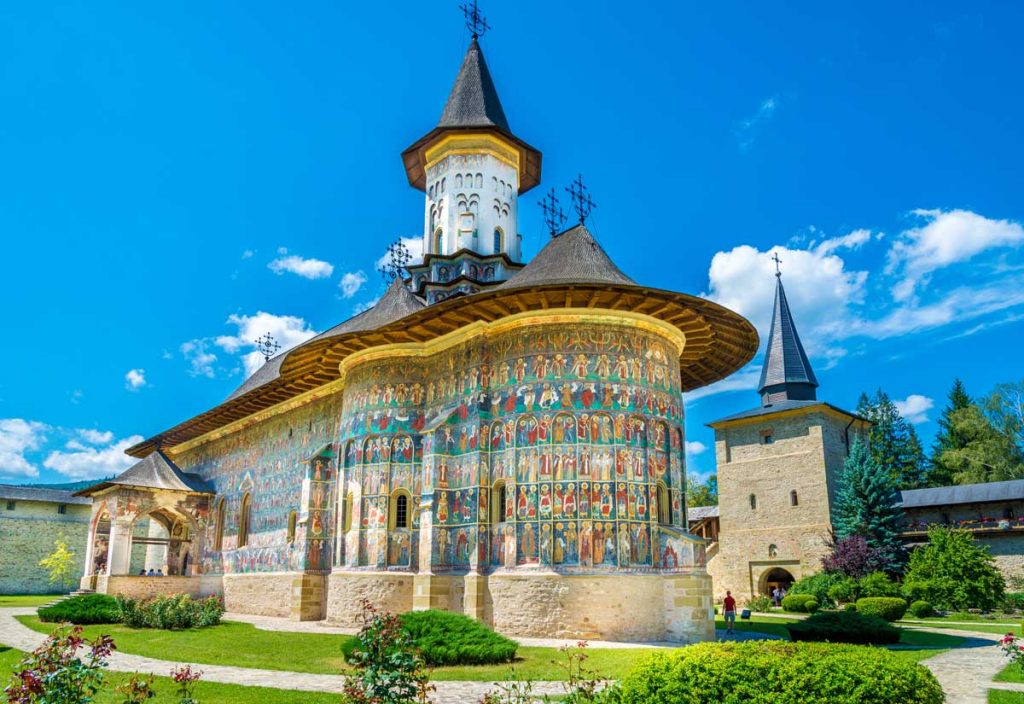
You do not have to be a religious person to visit the Voronet Monastery – one of the most famous painted monasteries in Bucovina, a unique monastery in the world. The Voronet Monastery is located 5 km away from Gura Humorului, in Suceava County.
The monastery was built in 1488, in record time (just 3 months and 3 weeks). Built by Stephen the Great, between May and September 1488, the Voronet Monastery commemorates the victory in the Battle of Vaslui.
A representation of the Last Judgment can be seen on the western wall. The “Last Judgment” fresco is so impressive that it was compared to Michelangelo’s Sistine Chapel, created in the same period. It is the most eloquent representation of the Apocalypse theme in Eastern Christianity. Its details reveal phenomenal esoteric knowledge and strict obedience of Orthodox canons.
The monastery is famous for the exterior paintings and their unique blue, known as the “blue of Voronet”. Voronet Monastery is a masterpiece, one of the Painted Churches of Moldavia listed in UNESCO’s list of World Heritage Sites.
Voronet was also known for the calligraphy school, where priests and monks learned to read, write and translate religious texts.
5. The Paintings Of Grigorescu From Agapia Monastery
Grigorescu’s paintings from Agapia Monastery are the main attraction of this place of worship. The paintings were made in 1858 when the painter was 18 years old. The mural paintings are stunning: reality is presented with artistic skills and through dynamic images, and beautiful colours.
Grigorescu’s saints from Agapia are unique and remarkable. So special that they have been the subject of many writings belonging to famous writers. To perceive the divine beauty of the paintings, the simplicity of the lines, the perfection of shapes and colours, you must visit Agapia Monastery.
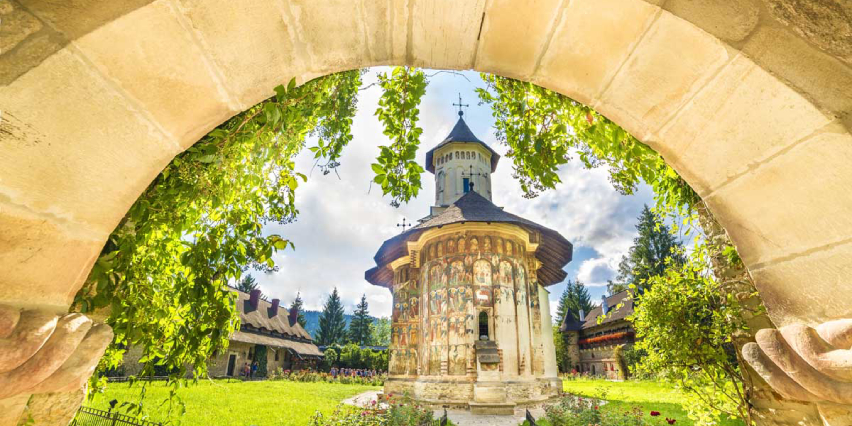
 ES
ES
 IT
IT
 DE
DE
 FR
FR
